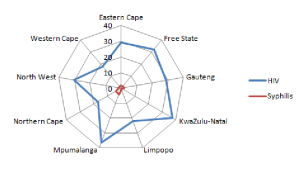Continuing the theme of my last post, but this time using the 2011 National Antenatal Sentinel HIV & Syphilis Prevalence Survey in South Africa, I again wonder why authors of such reports insist that HIV is almost always transmitted through ‘unsafe’ sexual behavior and fail to say anything about non-sexual modes of transmission.
Disturbingly, the authors note that the “the 2011 report has shown beyond reasonable doubt that there is no significant correlation between HIV and Treponema palladium, the etiological agent for active syphilis, as co-factor for HIV infection.In the 2012 survey we have started to pilot monitoring of Herpes type 2, HHV2, which usually causes genital herpes and is transmitted primarily by direct contact with sores, most often during sexual contact.” This sentiment is echoed on three further occasions in the document.
Rather than suspecting that HIV may sometimes be transmitted through non-sexual routes, such as unsafe healthcare, unsafe cosmetic practices or unsafe traditional practices, they are looking for another sexually transmitted infection to ‘correlate’ with HIV. Why? Or, better still, why not investigate non-sexual routes? There’s plenty of evidence.
South Africa is not the only country to survey syphilis prevalence along with HIV prevalence. Uganda and Zambia also do so, with similar results. Below are radar graphs for all three countries, showing that if syphilis is a proxy for unsafe sexual behavior, HIV does not resemble syphilis very much. This is no surprise, but data continues to be collected and analyzed, before concluding that there is little or no correlation.

HIV and Syphilis in South Africa

HIV and Syphilis in Uganda

HIV and Syphilis in Zambia
How many more years are to be wasted pretending that HIV is almost always transmitted through sexual behavior in high HIV prevalence African countries, but nowhere else? People in high HIV prevalence countries need to be made aware of the non-sexual risks they face. Health facilities, cosmetic facilities and other sites where HIV may be transmitted through contaminated blood or other bodily fluids also need to be made safer. Failing to address lack of knowledge and unsafe non-sexual practices results in an as yet unestimated number of people becoming infected with HIV; these infections are all avoidable.


